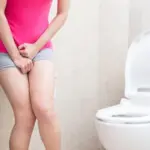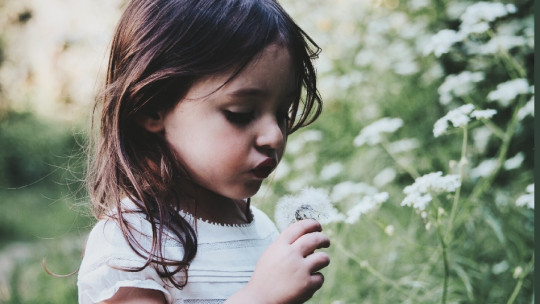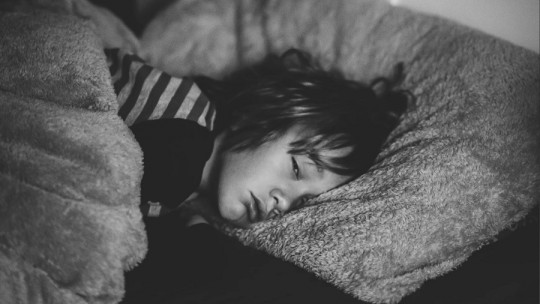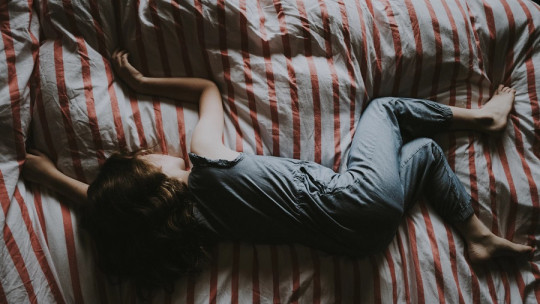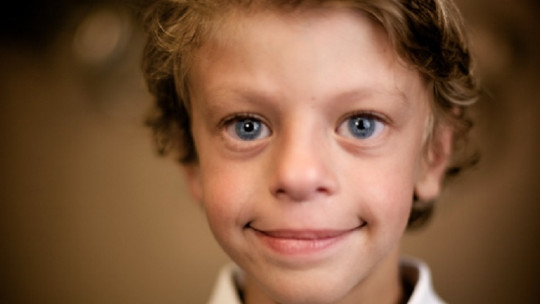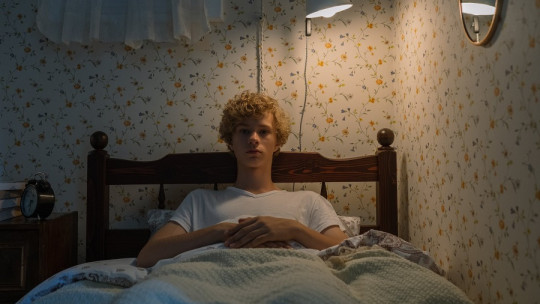
Enuresis, also known as urinary incontinence, could be defined as the repeated involuntary emission of urine during the day or at night while sleeping. For this incontinence to be taken into consideration for diagnosis and treatment, it should meet a series of criteria.
On the other hand, we can find different types of enuresis: daytime or nocturnal, primary or secondary. Secondary enuresis in boys and girls is what we are going to talk about in this article and is fundamentally characterized by the beginning of urinary incontinence once at least 6 months have passed after having learned to control the bladder.
In this article we will talk in more detail about secondary enuresis in boys and girls but first it is important to see what the diagnosis of enuresis consists of according to the diagnostic and statistical criteria of international reference manuals.
The diagnosis of enuresis
In the main diagnostic manuals, the DSM-5 of the American Psychiatric Association and the ICD-11 of the World Health Organization, we can find quite similar criteria for diagnosing enuresis, as we can see below.
The main diagnostic criteria for enuresis according to the DSM-5 manual With the followings:
On the other hand, In ICD-11, enuresis is included in the category of “elimination disorders.” the diagnostic criteria being the following:
These criteria They serve to make the diagnosis at a general level ; However, in order to make the diagnosis of secondary enuresis in boys and girls, some additional criteria are needed, as we will see in the next section.
What is secondary enuresis in boys and girls?
Now that we have seen what the diagnostic criteria for enuresis are according to the DSM-5 and ICD-11, it is time to specify what secondary enuresis consists of in children. Later we will see what the possible causes of this condition that causes this type of urinary incontinence would be, it should be noted that secondary enuresis is much less common than primary enuresis.
Secondary enuresis is mainly characterized by the onset of urinary incontinence, usually involuntary, once at least 6 months have passed after the child has learned to control his or her bladder (It may even have been years since the child began to control his or her bladder.)
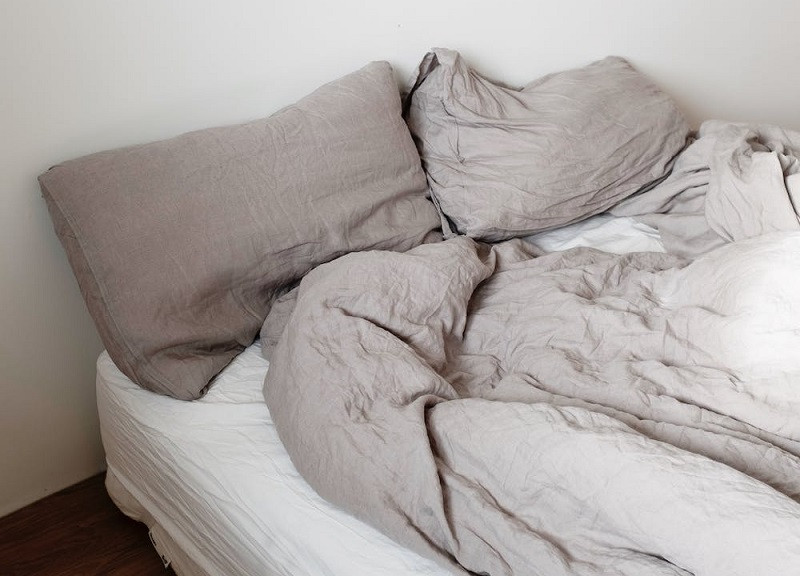
Given this, it is important to seek help from a professional so that they can evaluate the case, look for possible causes and carry out the most appropriate treatment based on each particular case.
Possible causes of this alteration
Secondary enuresis is quite often due to certain emotional and/or psychological causes, and in this type of case it is important to seek professional help in order to address these problems and promote the well-being of the child and their parents. Next we will see what the possible emotional and psychological causes of secondary enuresis would be.
1. Post-traumatic stress disorder (PTSD)
One of the main causes that could cause the development of secondary enuresis in boys and girls is the experience of a highly stressful or traumatic event which triggers the development of PTSD and, consequently, secondary enuresis. Among the main causes of the possible development of PTSD we can highlight the following: suffering a traffic accident, having to be hospitalized for a time, suffering a violent robbery, natural disasters, wars, the death of a family member, etc.
- You may be interested: “Posttraumatic Stress Disorder: causes and symptoms”
2. Family and/or interpersonal-social problems
Another cause of the development of this type of enuresis could be the fact of suffering from some family problems (e.g., alcoholism, neglect, abuse, fights between parents or their divorce) or having other problems at an interpersonal level. (e.g. being bullied at school). Unfortunately, These types of problems are usually covered up or tried to hide so it is more difficult to detect the root of the development of secondary enuresis in boys and girls.
- Related article: “Family therapy: types and forms of application”
3. Major changes in your life
Throughout life and even from an early age, people can undergo various very important changes, which can lead to a series of difficulties and problems. Among them, it could be the case that an important change causes secondary enuresis. Some of these changes could be the following: change of address, living with a single parent after divorce, having to change schools, the birth of a sibling, etc.
For these reasons and some more, it is important that if parents detect that their child is suffering from urinary incontinence, they go to a specialist so that they can find a solution and, most importantly, find the causes of this secondary enuresis, since the problem that could have caused this situation, perhaps it is more serious and requires psychological and/or medical support to be provided as soon as possible.
Other factors that can influence the development of secondary enuresis in boys and girls
In addition to the psychological factors that could cause the development of secondary enuresis in boys and girls, it should be noted that there are also other factors that could cause this condition. Among them, we are going to highlight below the most common in this type of cases.
1. Bladder problems
One of the possible causes of enuresis is having a small bladder that cannot hold a large amount of urine. In addition, there are children who may need to pass a large amount of urine at night. On the other hand, other children may suffer certain muscle spasms causing their bladder to be unable to hold a normal amount of urine.
Another possible bladder problem that causes enuresis is the “overactive bladder.” This problem is characterized by the fact that some children need to urinate more frequently than is common for their age. In this type of case, it is quite common for them to have to run to get to the bathroom in time and, quite frequently, they can wet their pants.
2. A sleep disorder
Other factors that could trigger this type of enuresis are some sleep disorders or certain problems related to rest and sleep. Among them, it is worth highlighting that some children sleep very deeply, are often unable to wake up on time and urinate in bed while they are asleep. On the other hand, obstructive sleep apnea although it is rare, it could also cause secondary enuresis.
- You may be interested: “The 7 main sleep disorders”
3. Medical problems and/or hereditary factors
Finally, it is worth highlighting among the possible factors associated with the development of secondary enuresis in boys and girls the existence of various medical problems (e.g., a neurological disease, certain hormonal problems, etc.) or hereditary factors (e.g. (e.g., the fact that one of the parents had suffered from enuresis during childhood).
Treatments against secondary enuresis in boys and girls
Among the main treatments for secondary enuresis in boys and girls, which can also be used for primary enuresis, it is worth highlighting a series of pharmacological and psychological treatments that will be briefly explained below.
1. Alarm method
The alarm method, also known as “pee-stop” or “urine alarm” (AO), is the psychological treatment of first choice as it has greater effectiveness and efficiency than other treatments.
The fundamental objective of this Betic is establish 2 answers for nocturnal continence:
- The prevention of the involuntary emission of urine and for this the sphincter must be adequately contracted.
- That the child is able to wake up to the stimulus that the bladder is full and he must go to the bathroom.
This method also seeks for the child to wake up so that the procedure of this method can take effect. To do this, a device must be used on which the child must be placed when sleeping and, when it detects any leakage of urine, it will sound an alarm so that the child wakes up and thus promotes the connection between the need to go to the bathroom to urinate. and wake up. If the child is able to wake up to the alarm, her parents should wake her up to make sure that she is really aware of what is happening and what she should do.
2. Dry bed training
This treatment would be the alternative to the alarm method that we have just seen, being less used because it requires more effort for the family of the affected child than the previous treatment. Dry bed training It is based on the use of the principles of operant learning.
The main component of this enuresis treatment is the use of a gun that must be programmed to wake up the child every hour of the night during the first night of training in order for him to go to the bathroom to urinate. Parents should positively reinforce urine retention and dry beds; whereas if urine leakage occurs, there should be a verbal reprimand and then the child should carry out cleanliness training and positive practice.
3. Pharmacological treatment
This would be another of the treatments used to address enuresis, being desmopressin one of the drugs most used in this type of case. With an antidiuretic function, it acts against the possible overproduction of urine in those cases in which there is a deficiency of the antidiuretic hormone naturally.
On the other hand, we can find imipramine. This medication can facilitate awakening and also produces a series of anticholinergic and antispasmodic effects that help reduce bladder count. On the other hand, these types of medications help with urinary continence thanks to their adrenergic properties.
Another widely used medication is “oxybutynin” which acts directly on the bladder muscle, being the most suitable for daytime enuresis or those types of enuresis in which there is bladder instability.

